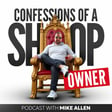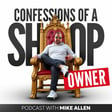
Ep 10 - Matt Lofton w/ Elite Worldwide - Coaching Call #2
When it comes to shop management systems, in my opinion, you have only one smart choice. Tekmetric. So be smart. And use Tekmetric. You'll thank me later. Learn more HERE
Today, you'll get a glimpse into what a coaching call with Elite Worldwide can look like. That's because Mike and Matt sit down for a coaching call about one of Mike's shops. They go over how to mix personal goals and professional ambitions and strategies for increasing efficiency and revenue at the shop.
00:00 Aligning Goals with Action Plan
06:29 Aligning Personal and Business Goals
08:44 Aligning Team Goals with Personal Growth
12:58 Monetary Motivation in Work
16:11 Fixed Salary for Productivity
18:20 Calculating Effective Labor Costs
20:32 Understanding Technician Costs
24:15 Boosting Efficiency and Productivity
26:56 "Non-Conformity Why Statements"
32:56 Increasing Daily Revenue with Fewer Cars
36:15 TechMetric Performance Report Discussion
39:36 Improving Service Efficiency & Execution
42:15 "Understanding Business Purpose and Process"
45:45 Customer-Business-Employee Triangle Insight
49:09 Optimizing Advisor and Technician Goals
51:12 "Managing Ethics and Incentives"

